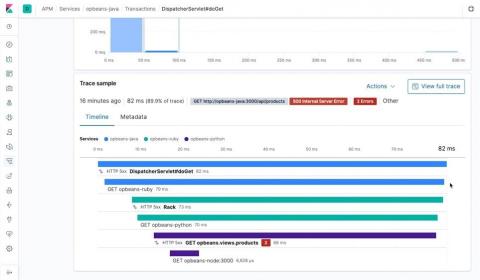Elastic APM: Free and open application performance monitoring
Application performance monitoring (APM) is a critical part of a unified observability strategy. APM offers deep insights into application performance and behavior, and organizations depend on it to deliver performant and high-quality digital experiences to their customers — both for keeping a proactive pulse on the health of their applications and for troubleshooting issues.







